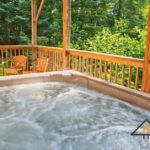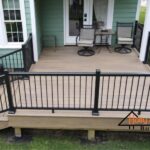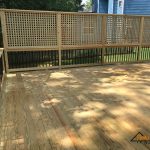(This is a repost from an older blog I did, but as the cold weather plowed into North Carolina recently, I thought it would be quite helpful.)
The temperatures are dropping and It won’t be long before winter arrives. Wouldn’t it be great to save some money on those heating bills while keeping your family and home warm and cozy?

REARRANGE
Check out the location of your furniture. Is it blocking vents or radiators? Try a new winter furniture arrangement to allow the heat to circulate freely in your living spaces. Move seating away from large windows or doorways where it may be colder or drafty.
Cover your wood or tile floors with area rugs to keep those toes cozy and block heat loss through cold floors.
- Less simple: Remodeling? Radiant floor systems can be added under tile, wood or carpet to heat your floors.
Check it out
Make sure that all of your heating vents are open. Adjust the dampers in the vents and ductwork for maximum airflow.
- Less simple: Duct and vent booster fans are available to install for forced heat systems. These can sense when the furnace is on and operate to increase the airflow to colder rooms.
Are your furnace air filters clean? Replacing dirty filters can improve circulation and will save wear and tear on your furnace.
If you have radiators that aren’t heating well, make sure they aren’t air-locked and bleed them if necessary. To reflect the warm air into the room, attach tin foil, shiny side out, to the wall behind the radiator.
LET THE SUN IN
The sun can be your best furnace. Open curtains in the sunny areas of your home to capture the free heat. Close curtains at night to help trap the heat inside, and keep them closed on cloudy, windy days or in shady areas of your home.
- Less simple: If your house does not have double-pane windows, you may wish to purchase insulated curtains to help keep out the cold.
Keep the fans on
Ceiling fans not only keep you cool in summer but can be used to push warm air that is rising to the ceiling back down again into your living space. Look for the switch on your fan that reverses the blades to clockwise.
- Less simple: For extra chilly rooms, consider purchasing a ceiling fan with a built-in space heater that can be controlled by remote.
Put a damper on it
A roaring fire makes any room feel cozy, but loose fireplace dampers can leak much of your warm air. Check that your damper closes tightly when not in use and adjust it if needed.
- Less simple: Fireplace damper plugs or flue blocker plugs can be purchased to help seal the flue and keep the warm air in. Measure your damper carefully before purchasing.
Close the door
Do you have rooms in your house that are rarely used? If so, close the vent and the door and allow the room to go unheated until you need it. Create a warm office space or playroom by closing the door with the heating vent open to capture the warm air and keep it there.
Seal it up
Avoid losing heat to the “stack effect”. This occurs when rising warm air pulls in cool air from outside through gaps such as around doors and windows. Check for leaks. Use a candle or incense to test for drafts around your windows and door frames. Use good quality weather stripping, caulk or foam to fill the gaps.
Add a “door snake” or draft extruder along the bottom of exterior doors and the door to your garage to keep out drafts.
Exchange screens and screen doors for your storm windows and storm doors.
- Less simple: Create warm air pockets in less often used windows by applying plastic sheeting kits or bubble wrap insulation to your windows.
Electrical outlets and sockets can also be heat loss culprits. Give these the candle test as well. Socket sealers and outlet insulating kits can be installed under faceplates.
Don’t forget attic openings, crawl space and basement doors, dryer vents, and other exterior access points. Keep that garage door closed as much as possible to avoid additional drafts and cooling.
Increase humidity
Moist air is warmer air and winter air tends to be dry. Increase your home’s humidity level when possible. Leave the door open and fan off when taking a shower; boil water on the stove instead of heating in the microwave.
- Less simple: Purchase a room or whole house humidifier.
Find a soft, fuzzy blanket
Sometimes the simplest way is to keep the person warm, not the house. Keep that fuzzy robe or hoodie handy; invest in warm socks, slippers, and sweaters. Have a hot cup of tea, coffee or cocoa or bowl of soup. Fill a hot water bottle or get out your electric blanket (they use very little energy compared to turning up the thermostat.)
Other Effective, But Less Simple Solutions
As your home ages, it may be time to consider updating your aging windows, adding improved insulation to attics and crawl spaces, sealing ductwork, or installing a higher-efficiency furnace and programmable or smart thermostats. A programmable thermostat allows you to adjust the heat to best match your family’s schedule, turning it down for the hours when the house is empty and at night and increasing it for warm mornings and evenings.
Winter may be on its way, but there is still time to prepare for a warm, cozy home. And if you are thinking about enclosing your deck or patio to add a little more warmth, just give us a call.







